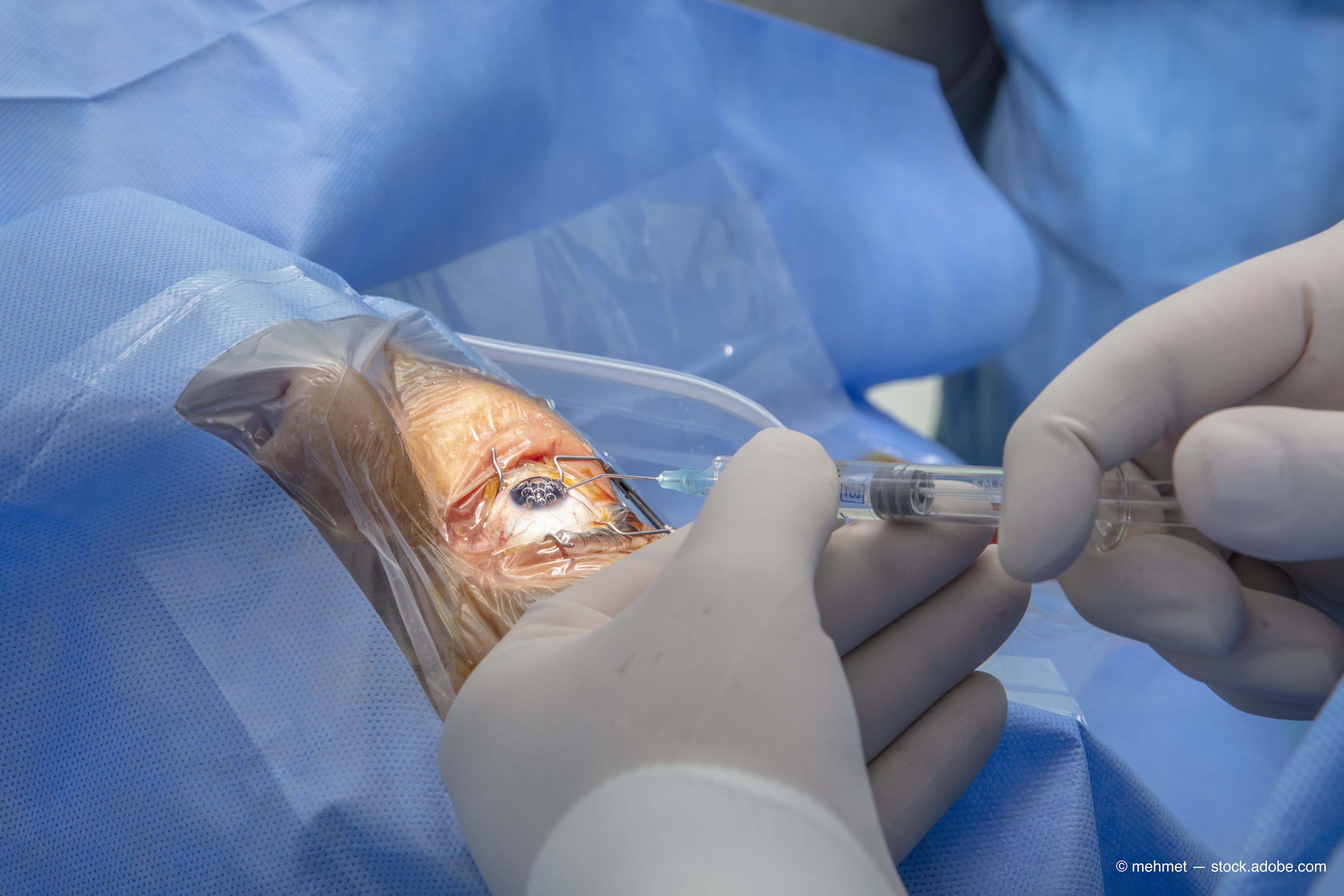Article
DARPin molecule reducing wet AMD treatment burden for patients
Author(s):

The molecule can be administered less often without sacrificing any of the efficacy that physicians seek for patients.
This article was reviewed by Rahul N. Khurana, MD
The two-year results of the CEDAR and SEQUOIA phase III clinical trials, among the largest clinical trials ever to study neovascular age-related macular degeneration (AMD), showed that patients did as well on the less-frequent dosing of abicipar pegol (Allergan) as they did when receiving monthly treatment with ranibizumab (Lucentis, Genentech).
According to the study, the patients were able to maintain visual gains with abicipar pegol as well as they did with ranibizumab.
“At the 2-year end point, 93% of patients treated with abicipar every eight weeks after three loading doses or six injections in the second year had stable vision, 90% of patients treated with abicipar every 12 weeks after two loading doses or four injections during the second year had stable vision, and 94% of patients treated with ranibizumab every 4 weeks or 12 injections in the second year had stable vision,” said Rahul N. Khurana, MD, clinical associate professor in ophthalmology, University of California Medical Center, San Francisco and Partner at Northern California Retina Vitreous Associates, Mountain View, CA.
Related: Novel integrin regulator a key for AMD treatment
A major plus associated with abicipar pegol was that the drug is notable for its substantially decreased treatment burden, as demonstrated by those results.
“Over the course of 2 years, patients receiving abicipar pegol averaged 10 injections compared with 25 injections with ranibizumab and had the same visual outcomes,” Dr. Khurana said.
In addition to the sustained improvements in vision, the retinal anatomy improved during the second year of the study with a decrease of 147 μm in the patients who received abicipar every eight weeks, a decrease of 146 μm in the patients who received abicipar every 12 weeks, and a comparable decrease of 142 μm in the patients treated with ranibizumab every four weeks, he noted.
Abicipar pegol is part of a new class of drug that includes the novel designed ankyrin repeat proteins (DARPins), which are new protein therapeutic agents.
According to Dr. Khurana, DARPins have some unique properties.
“Abicipar pegol is smaller than ranibizumab, has a higher binding affinity for vascular endothelial growth factor A by 90-fold compared with ranibizumab, and has a longer half-life,” he said. “That combination of the three factors is important for a potential longer duration in the eye compared with ranibizumab that has to be administered on a monthly basis. Abicipar pegol can be given every three months.”
Related: Study targets subretinal option for AMD treatment
Impact on treatment patterns
Once the drug receives FDA approval, its availability in clinical practice should relieve the patients’ treatment burden.
“From the standpoint of the physicians, this molecule also allows us to feel confident that patients can receive less frequent treatments but, importantly, they will not lose vision with extended treatment intervals,” Dr. Khurana said. “This is the most exciting aspect of this drug.”
Though some patients can successfully have longer intervals between injections, many cannot go for extended periods.
“This group that required more frequent dosing may benefit from abicipar,” he said.
Related: Intraoperative surgical methods key to AMD treatment
Another important finding from these studies was that in the second year, the investigators saw the efficacy that was extended from the first year of the study, and, importantly, no new adverse events occurred during the second year. The first year saw a high rate of intraocular inflammation.
“It was reassuring from a safety perspective to see that that there were no cases of retinal vasculitis and the inflammation rate was similar with ranibizumab during the second year of the studies,” Dr. Khurana concluded. “From the perspective of efficacy, it was nice to see that the positive visual results were also extended throughout the second year.”
Abicipar is currently under review by the FDA.
Read more by Lynda Charters
Raul N. Khurana, MD
E: rNkhurana@gmail.com
Dr. Khurana has served as a consultant and received grant support from Allergan.





